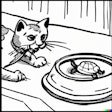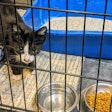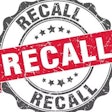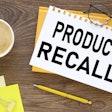The Association of American Feed Control Officials (AAFCO) held its "mid-year" meeting on January 13–15, 2015 in San Antonio, Texas, USA. Although the issues on the table appear to have been less contentious than in recent meetings, there was still room for lively discussion.
After eight years in development and sometimes serious debate, the controversial aspects of the proposed revisions to the AAFCO Dog and Cat Food Nutrient Profiles appear to have been ironed out. So, they passed the Model Bills and Regulations Committee with little drama. Also passed by the committee were a few amendments to AAFCO Model Regulation PF7, needed to address the issue caused by a distinction in the profiles between requirements in maximum calcium intake for large- vs. small-sized growing dogs.
Assuming these revisions are accepted by the full AAFCO membership at the annual meeting in August 2015, they will be published in the 2016 Official Publication. AAFCO is likely to then establish a grace period for enforcement of one year from publication for new products and two years for existing products. After that time, petfood manufacturers would have to have reformulated and/or relabeled their products to be in compliance with the new regulations. Details as to the changes these revisions will impose will be discussed in an upcoming column.
In other news, a newly updated Pet Food Regulations Label Review Checklist was approved by the full AAFCO membership and should appear in the Official Publication in 2016. This document helps both regulators and petfood companies systematically review labels for compliance. The Pet Food Committee is still working on the Pet Food and Specialty Pet Food Labeling Guide. Offered as a separate publication, it goes into greater detail as to application and interpretation of the rules. Once the revisions to the Labeling Guide are complete, AAFCO intends to hold a Pet Food Labeling Workshop to help educate both control officials and industry on current requirements. The workshop is tentatively scheduled for January 2017.
Other items discussed in the Pet Food Committee meeting were use of "quality or grade" designations in the ingredient statement, appropriate use of pictorial representations of ingredients on the label, and the names of nutrients used in guarantees. It was decided to include discussion on these points in the aforementioned Labeling Guide. Also, a working group was formed to discuss clarifying changes to the tartar control guidelines.
With regard to ingredients, the tentative definition for "(Fruit) Pomace" moved to official status. Also becoming official is the requirement to specify means of stabilization for rice bran, e.g., "Heat Stabilized Rice Bran," as well as the revision of the definition for xanthan gum to allow for its use in canned dog and cat foods. A revision to the definition to Yucca schidigera extract to allow its use as a means of manure odor control in various small mammals (rodents and hedgehogs) was accepted by the AAFCO membership as a new tentative definition. That does not allow for use in dog and cat foods for that purpose, however, although it is still acceptable as a flavoring agent in foods for those species.
The Ingredient Definitions Committee discussed a proposal to delete the definition for "Fat Product (Feed Grade)." This definition was originally intended to apply to what would be "out of spec" animal and vegetable fats and oils (e.g., too low in total fatty acids or too high in unsaponifiable matter to meet the definition). However, there is concern from regulators that some companies are using it as a catch-all for ingredients that in fact wouldn't be suitable for use in animal feeds. Because some companies currently are using the term legitimately, though, it was argued that tightening up the verbiage to clarify application of the definition was fairer than simply disposing of it altogether. The matter was tabled pending further discussion at the annual meeting.
A proposal to add lentils to the list of allowable sources in the definitions for pulse fractions (pulse fiber, pulse flour, pulse protein and pulse starch) was accepted by the committee (now joining peas as the only permitted sources). Although very controversial when the original definitions were accepted, not a topic of discussion was any proposal to amend the definitions for these pulse fractions to allow for alternative means of production, e.g., wet milling. As currently defined, then, only dry-milled pulse fractions are allowed in animal feeds, including petfoods. As this has a great impact on some suppliers of these ingredients, it is assumed proposals to amend the definitions are imminent.
There was some discussion regarding progress made by the US Food and Drug Administration (FDA) in development of its own petfood labeling regulations separate and distinct from AAFCO, as mandated by the FDA Amendments Act of 2007 (FDAAA). It was mentioned by one source that a proposal should come out before the final rule is issued implementing preventive controls requirements for animal feeds under the Food Safety Modernization Act of 2011 (FSMA). If accurate, that would mean we would see something regarding both items later in 2015. However, it was reported elsewhere that the draft rules for FDAAA are currently undergoing external review, which means FDA has no control over the timeframe.
Of course, whatever FDA proposes could have dramatic impact on how petfoods are regulated in the US. All indications at this time are that the FDA proposal will be "AAFCO-like" (i.e., no direct conflicts), but it appears that everyone will just have to be patient for now.



















